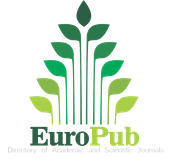Wacana “Investigative Reporting”
Abstract
Keywords
Full Text:
PDF (Bahasa Indonesia)References
Columbia Journalism Review, Www.Cjr.Org, Archive,
May/Juny 2001, 10/8/01,18.00, Special Report: Investigative
Journalism: The Investigators: Staying On Target.
http://www.spartacus.schoolnet.co.uk/htm:Agustus-2000
Ted Gup, Eye Of The Storm: Why Jeff Gerth, A Most Accomplished Investigator, Is Also Most Controversial, Columbia Journalism Review; Www.Cjr.Org, Archive, May/Juny 2001, 10/8/01,18.00, Special Report: Investigative Journalism — The Investigators: Staying On Target.
Bruce D. Itule & Douglas A.Anderson, News Writing and Reporting for Today’s Media, third edition, McGrawHill, Inc., New York, 1994.
Atmakusumah, Laporan Penyidikan (Investigative Reporting),
bahan pelajaran di Lembaga Pers DR.Soetemo, Jakarta; yang dikirim kepada saya, Januari 2001.
David Murphy, “The Stalker Affair and the Press” (Unwin yman, 1991); dalam David Spark, Investigative Reporting, a study in technique, Focal Press, Oxford, 1999.
Pete S.Steffens, dari Journalism Departement, Western Washington University; dalam Atmakusumah, op.cit.
Hugo De Burgh (ed.), Investigative Journalism: context and practice, Routledge, London, 2000.
Sheila S.Coronel, July 31, 2000, Investigative Reporting: The Role of the Media in Uncovering Corruption; makalah, kiriman Atmakusumah dari Lembaga Pers DR Soetemo.
Steve Weinberg, The reporter’s handbook: an investigator’s guide to documents and technicques, 3rd ed., under the ponsorship of Investigative Reporters & Editors, Inc.(IRE), ST.Martin’Press, New York, 1996; Edisi revisi dari The reporter’s handbook / under the editorship of John Ullman and Jan Colbert (Investigative Reporters & Editors, Inc) 2nd ed. c1991.
Fred Fedler, An Introduction to The Mass Media, Harcourt Brace Jovanovich Inc., New York, 1978.
John Ullman dan Steve Honeyman, The Reporter’s Handbook: an investigator’s guide to documents and technicques, under the sponsorship of Investigative Reporters & Editors, Inc.(IRE), ST.Martin’Press, New York, 1983.
Herbert Strentz, Reporter dan Sumber Berita: persekongkolan dalam mengemas dan menyesatkan berita, PT Gramedia Pustaka Utama, Jakarta,1993.
Bondan Winarno, Bre-X Sebungkah Emas di Kaki Langit, Penerbit Inspirasi Indonesia, Jakarta, 1997.
Brian S.Brooks (et..all), 1988, News Reporting and Writting, third edition, New York,: St.Martin Press. Steve Weinberg, op.cit.
William L. Rivers dan Cleve Mathews, Etika Media Massa dan Kecenderungan untuk Melanggarnya, PT Gramedia Pustaka Utama, Jakarta, 1994.
DOI: https://doi.org/10.29313/mediator.v7i2.1289
Refbacks
- There are currently no refbacks.

This work is licensed under a Creative Commons Attribution 4.0 International License























